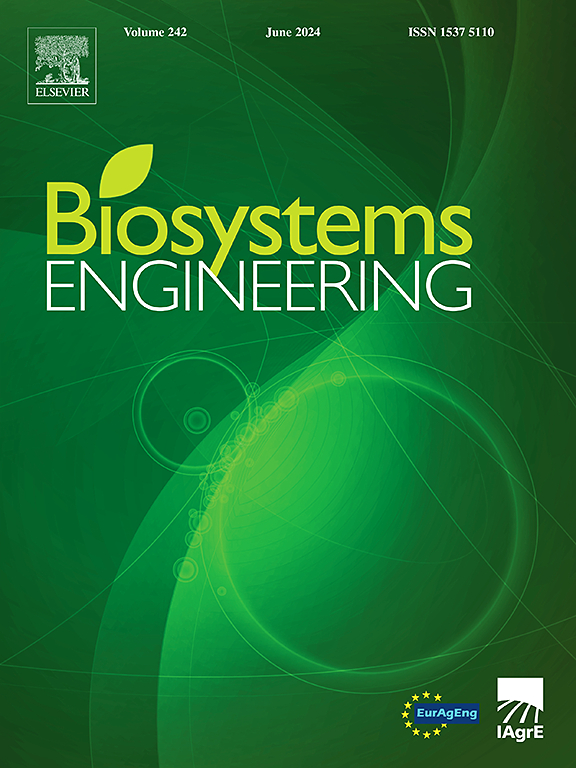Application of vibration analysis to discriminate hollow radishes
IF 4.4
1区 农林科学
Q1 AGRICULTURAL ENGINEERING
引用次数: 0
Abstract
Ice cream radish is a new hybrid variety that easily suffers from hollowness after harvest. This physiological disorder is hard to identify through visual inspection due to the absence of obvious external symptoms. To address this issue, a rapid detection method was proposed based on finite element analysis and multivariate statistical methods. Through physical and chemical analysis, it was shown that the firmness, density, soluble solid content, and water content of hollow radishes decreased with the appearance of hollowness defects, whereas the crude fibre content of fresh weight showed a different tendency. A two-layer radish model simulating the peel and flesh was established to investigate the effects of various physical properties on the second to seventh resonance frequencies and amplitudes by finite element analysis. The simulation results showed that the peel thickness and hollow volume had a major influence on the variation of the second normalized resonance frequency. Due to the minimal range of peel thickness, the influence of hollowness defects would be mainly considered for the prediction of hollow radish. A detection system based on the acoustic vibration method was developed to acquire the response signal of radish, and different discriminative models were established using seven vibration parameters selected by stepwise discriminant analysis. Among these various modelling methods, the best classification performance was observed for the backpropagation neural method, with an overall accuracy of 97.73% in the validation set. This finding indicated that hollow radish could be identified using the proposed detection system, which could be applied to commercial sorting lines.
求助全文
约1分钟内获得全文
求助全文
来源期刊

Biosystems Engineering
农林科学-农业工程
CiteScore
10.60
自引率
7.80%
发文量
239
审稿时长
53 days
期刊介绍:
Biosystems Engineering publishes research in engineering and the physical sciences that represent advances in understanding or modelling of the performance of biological systems for sustainable developments in land use and the environment, agriculture and amenity, bioproduction processes and the food chain. The subject matter of the journal reflects the wide range and interdisciplinary nature of research in engineering for biological systems.
 求助内容:
求助内容: 应助结果提醒方式:
应助结果提醒方式:


